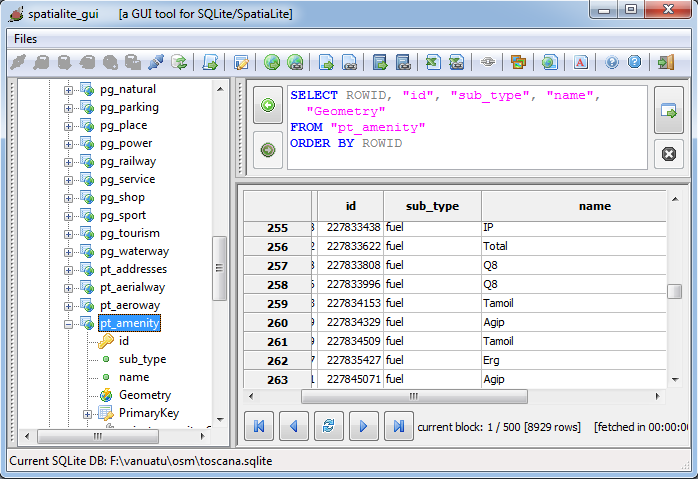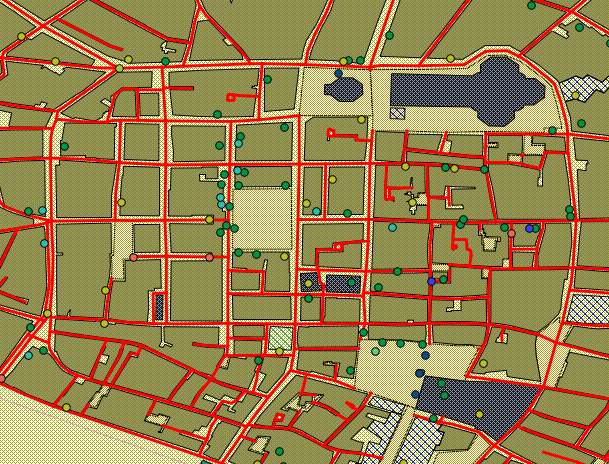usage: spatialite_osm_net ARGLIST
==============================================================
-h or --help print this help message
-o or --osm-path pathname the OSM-XML file path
both OSM-XML (*.osm) and OSM-ProtoBuf
(*.osm.pbf) are indifferenctly supported.
-d or --db-path pathname the SpatiaLite DB path
-T or --table table_name the db table to be feeded
you can specify the following options as well
-cs or --cache-size num DB cache size (how many pages)
-m or --in-memory using IN-MEMORY database
-2 or --undirectional double arcs
--roads extract roads (default)
--railways extract railways
(mutually exclusive)
template-file specific options:
-ot or --out-template path creates a default template-file
-tf or --template-file path using a template-file
|
$ spatialite_osm_net -o my_country.osm.pbf -d my_country.sqlite -T roads
SQLite version: 3.7.11
SpatiaLite version: 3.1.0
Parsing input: Pass 1 (Nodes and Ways) ...
Parsing input: Pass 2 (Arcs of the Graph) ...
Creating helper table 'roads_nodes' ... wait please ...
Helper table 'roads_nodes' succesfully created
Dropping temporary table 'osm_tmp_nodes' ... wait please ...
Dropped table 'osm_tmp_nodes'
Dropping temporary table 'graph_nodes' ... wait please ...
Dropped table 'graph_nodes'
VACUUMing the DB ... wait please ...
All done: OSM graph was succesfully loaded
$
|
$ spatialite_osm_net -o my_country.osm.pbf -d my_country.sqlite -T rails --railways
SQLite version: 3.7.11
SpatiaLite version: 3.1.0
Parsing input: Pass 1 (Nodes and Ways) ...
Parsing input: Pass 2 (Arcs of the Graph) ...
Creating helper table 'rails_nodes' ... wait please ...
Helper table 'rails_nodes' succesfully created
Dropping temporary table 'osm_tmp_nodes' ... wait please ...
Dropped table 'osm_tmp_nodes'
Dropping temporary table 'graph_nodes' ... wait please ...
Dropped table 'graph_nodes'
VACUUMing the DB ... wait please ...
All done: OSM graph was succesfully loaded
$
|

